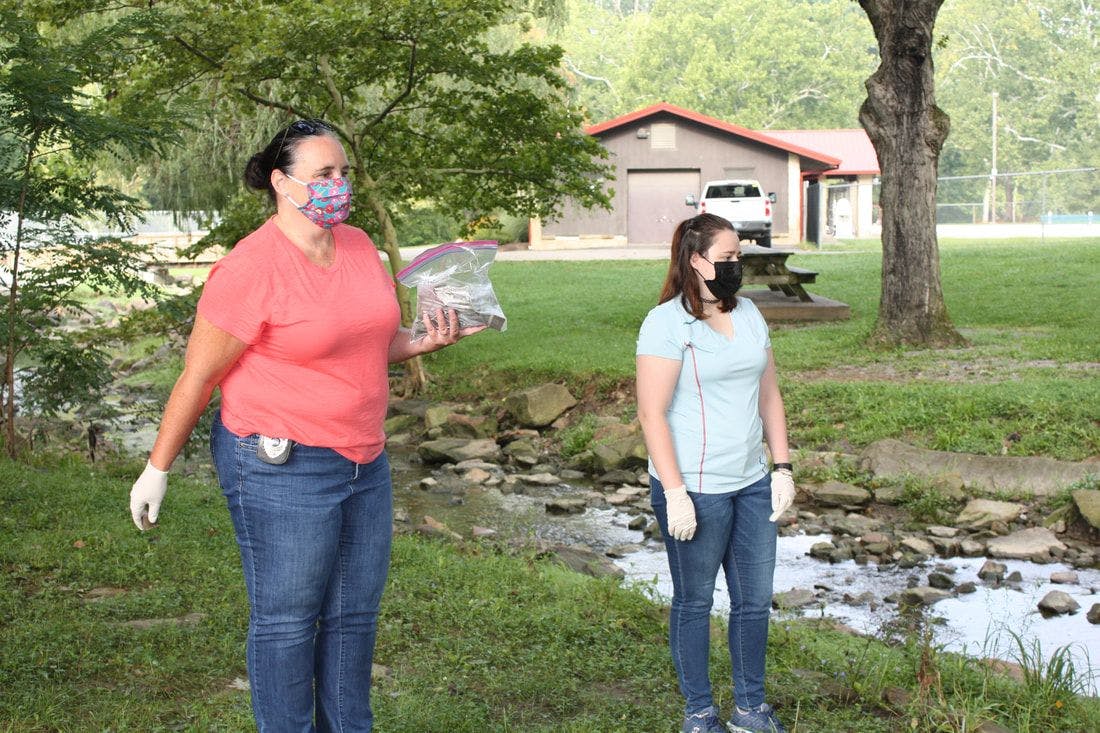Rabies vaccine baits are safe, but keep an eye out for them

Aug. 24, 2022
By Mary Wade Burnside
In 2019, Monongalia County had 20 reported cases of rabies, the viral illness that is always fatal in mammals.
The final case occurred on the very last day, New Year’s Eve, when a kitten found in downtown Morgantown was taken to a veterinary clinic and proceeded to bite some employees. The kitten was found to have rabies; the employees had to undergo post-exposure rabies prophylaxis treatment, which is neither fun nor cheap.
Since the beginning of 2020, however, Monongalia County has had only two reported rabies cases.
Why the huge change? Monongalia County Health Department credits it to the oral rabies vaccine (ORV) baits that are distributed in several Eastern states, including Monongalia and several other West Virginia counties.
First, in August, the United States Department of Agriculture (USDA) drops baits from airplanes and helicopters. After that, MCHD Environmental Health sanitarians go out on foot and in vehicles to distribute about 1,400 baits in Morgantown, mostly in parks, around the rail-trail and other green spaces.
As noted recently by Todd Powroznik, manager of MCHD’s Environmental Health program, studies have shown that most of the baits are consumed by the intended target – raccoons and other wildlife that need to be inoculated against the virus – in about four days, and in a week, they are pretty much gone.
Individuals might find some of these baits in their yards or when they are out and about. They are not dangerous.
However, pet owners should keep their dogs and other animals away from them. Even though the contents of the bait, usually fishmeal, and the rabies vaccine, will not hurt animals, dogs could get an upset stomach if they gobble up very many.
That’s why we work hard to get the word out and encourage pet owners with yards where their animals play to take extra precautions around this time of year. They should take the time to inspect their yards and keep a closer eye on their pets when they are outside. Anyone who finds the baits should don gloves and move them to a place where their pets can’t get them but wildlife can.
The first round of airdrops took place Aug. 5-8 and the next one starts today, Aug. 24, and will go through Aug. 31. As noted several states and West Virginia counties are baited, and because of issues such as weather conditions that can crop up, the exact time that Monongalia County will be baited is not known.Then, on Thursday, Aug. 25 and Friday, Aug. 26, MCHD Environmental Health sanitarians will be driving around the Morgantown area, distributing ORV baits in parks, near the rail-trail and other grassy areas.
For anyone who might think these baits are a burden to watch out for, let’s return to the stories we heard in 2019, when Monongalia County experienced 20 reported rabies cases.
Back then, a common theme was one of a dog playing in a backyard and getting into a tussle with a raccoon that turned out to have rabies.
What happened at that point depended. If the dog was up to date on its rabies vaccine, it could be inoculated again and quarantined for a period of time to make sure it didn't develop rabies.
If the dog (or sometimes a cat) wasn’t vaccinated at all, the owner generally had two choices: double cage quarantine for six months, which is a very isolating situation for the animal and difficult for the owner, or euthanasia.
This is a good time to emphasize that keeping your animals up to date on their rabies vaccines not only helps prevent this heartbreaking scenario, but it’s also the law in West Virginia.
I’ll also add that like those vet employees that interacted with the kitten, if the dog’s human family members had washed a bloody scrape off of their pet or had also come into contact with the rabid animal or its blood or saliva, they too were encouraged to receive the expensive and extensive post-exposure rabies prophylaxis treatment.
Before 2019, the USDA had moved its baiting line mostly west of Monongalia County. In early 2019, based on rising reported rabies cases, Monongalia County Health Department employees met with rabies prevention staff members from the USDA’s Animal and Plant Health Inspection Service in Elkins and requested that the line be moved back east.
The USDA wasn’t sure it was going to happen in 2019, but it did. Now, for the fourth year in a row, ORV baits are being distributed throughout Monongalia County. The results have been dramatic. And the sad stories of the aftermath of a dog vs. rabid raccoon encounter have dwindled.
So please, watch out for the baits this month. For more information, click here. You can also see a coverage map and a Q&A.
Mary Wade Burnside is the public information office for Monongalia County Health Department.